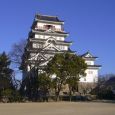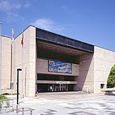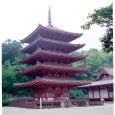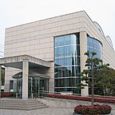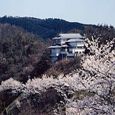Fukuyama
Advertisement
By train
Fukuyama, an intermediate stop on the San'yo Shinkansen line, is approximately 25 minutes from Hiroshima via the Hikari (¥4800), one hour from Osaka (¥7850) and 90 minutes from Fukuoka (¥11000). One-seat rides on the Nozomi depart once per hour from Kyoto (80 minutes, ¥8700), Nagoya (2 hours, ¥12200) and Tokyo (3 3/4 hours, ¥17200).
You cannot use the Nozomi with the Japan Rail Pass; if coming from Tokyo, Nagoya or Kyoto you will have to change trains en-route. However, there are two early-morning Hikari trains from Nagoya and Kyoto that offer a one-seat ride to Fukuyama.
By bus
From Tokyo, Odakyu Bus and Chugoku Bus operate the nightly Etoile Seto to Fukuyama from Shinjuku Station
Keihan Kyoto Kotsu runs three round-trips from Kyoto station (4 hours, ¥4100), and Kintetsu Bus runs seven round-trips from Osaka's Umeda and Namba stations (3 1/2 hours from Umeda, ¥3770).
From Hiroshima, Rose Liner buses operated by Ikasa Tetsudo and Tomo Tetsudo operate 2-3 times per hour out of the Hiroshima Bus Center (1 hour 40 minutes, ¥2300).
Myoo-in Temple
Myoo-in is a Buddhist temple in Fukuyama, Hiroshima, Japan.This temple was said to be constructed by the Ritsu school of Buddhism in 807, by Kukai. The original name of the temple was Jofuku-ji. The major object of worship at this temple, a statue of Juichimen-Kannon, is estimated to have originated in the early years of the Heian Period and no doubt was extant in the 9th century. During the Edo Period this temple changed its sect affiliation and name to fall under the protection of the Mizuno clan, a clan of Daimyo in the region. Today, the temple belongs to Daigakuji-ha of Shingon Buddhism.
Fukuyama Castle
Fukuyama Castle sometimes called Hisamatsu Castle or Iyo Castle was the castle of the Bingo-Fukuyama Han during the Edo period of Japanese history. The castle is located in Fukuyama Park in Fukuyama, Hiroshima near Fukuyama Station.The castle was built on a hill in Fukuyama plain and it was the capital of Bingo Fukuyama Han. The construction was started in 1619 during the Genna era. There were doubled Moat around the castle and an inlet lead into Seto Inland Sea. Most buildings of the castle was destroyed during World War II. And most of the Dry stone was removed, so now there is Fukuyama Station near the castle. The main building was rebuilt in 1966.
Human Right and Peace Museum
This museum displays the materials related to human rights and peace, urging us to believe the most essential assignment in life is to ensure human rights by eliminating social discrimination and other problems, and thereby achieve everlasting peace.
Hiroshima Prefectural Museum of History
“Kosado Sengen-cho” was a popular medieval town that eventually became submerged beneath the Ashidagawa River. This museum lines up the exhibits that feature the history and culture of the Seto Inland citizens, based on articles excavated through the aforementioned research efforts.
Fukuyama City Kannabe Historical Folklore Museum
This museum exhibits the excavated articles from the primitive age to the tumulus period, as well as those in the medieval Kannabe Castle. Modern and contemporary work tools are also on display. The museum has three exhibit rooms, and you can easily make a tour of the primitive and ancient exhibit room, the permanent and project exhibit room, and the exhibit room of the modern and contemporary work tools.
Information not available


